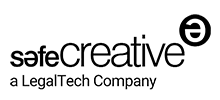Obituary for Attai Chen, 1979-2023
Published: 10.09.2023
Attai Chen with one of his sculptures, photo courtesy of Patti Bleicher
© By the author. Read Klimt02.net Copyright.

Attai, whenever you laughed and your eyes shone, your friendliness and cheerfulness enveloped us and made us feel warm. This is exactly how we will remember you.
-

Janine Fox. K2 Academy of Contemporary Jewellery Ltd. New Talents Award Nominee 2025
09Dec2025 -

Create Awareness with Jewelry
09Dec2025 -

Anneleen Heirbaut. Royal Academy of Fine Arts Antwerp. Artesis Plantijn University College. New Talent Award Nominee 202...
08Dec2025 -

Black Dove #1 by Yael Friedman. Future Classic by Anja Eichler
05Dec2025 -

Weaving Resistance. Feminist Stories in Metal by Yuanxing Lin
03Dec2025 -

Narrative Jewellery: Visual Snapshots and Storytelling. Spotlight Artworks by Klimt02
28Nov2025 -

Elisabeth Pira. PXL-MAD School of Arts. New Talents Award Nominee 2025
24Nov2025 -

Mr Hamilton after Skirving. Future Classic by Nichka Marobin
21Nov2025 -

Meet the Jury Members of the New Talents Award 2025. The Annual Recognition Supporting Graduates and Schools.
19Nov2025 -

Echoes in Stone: Rings Celebrating Humanity’s First Tools
13Nov2025 -

Embracing AI Without Losing the Muse
11Nov2025 -

From Tool to Material of Action: A Creative Paradigm in Contemporary Jewelry
29Oct2025 -

Lena Cohen Jewellery. Timeless Fine Jewellery for Everyday Elegance
22Oct2025 -

How and When a Piece becomes a Classic? Spotlight Artworks by Klimt02.
17Oct2025 -

Nebulae of Fragments. Threads and Traces by Ekaterina Korzh
08Oct2025













